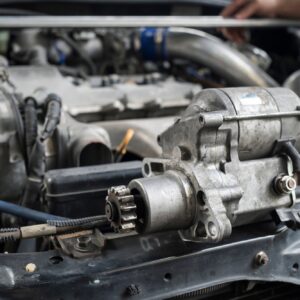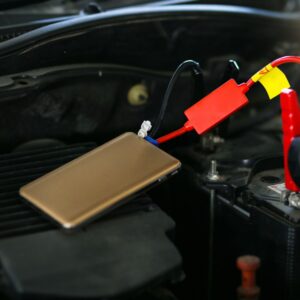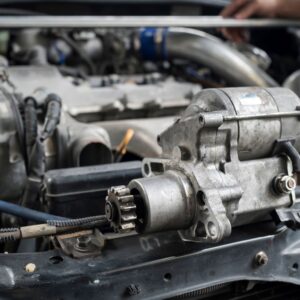The car starter is a small motor that cranks the dormant engine when you start your vehicle. It’s an integral part of the starting system, but it also has a finite service life and will require replacement when it finally wears out. Knowing how long a starter lasts in a car can help you schedule preventive replacement to minimize the disruption to your schedule.
How Long Do Starters Last In a Car?
Most car starters can start the vehicle between 80,000 and 100,000 times. In terms of mileage, a typical car starter can last between 100,000 and 300,000 miles before you have to replace it.
Keep in mind that these numbers are not set into stone. Car starters might develop issues or fail earlier than the expected number of starts or mileage.
Furthermore, external factors can extend or shorten the car starter’s service life. Important factors include the engine, your driving habits, and environmental conditions like weather.
Do you own an older vehicle with many miles on its odometer? It might need a replacement car starter soon. Older, high-mileage vehicles can strain the starter in many ways. For example, an older engine might require multiple attempts before it finally cranks. Using the starter more often will wear it out faster.
What Causes a Car Starter To Go Bad?
The car starting system is made up of several parts like the starter motor, relay, and solenoid switch. It needs all these parts to work together. If one part fails, the entire system will perform less effectively.
Here are the most common reasons for a bad car starter:
Worn Brushes
The car starter motor is a DC motor that has sintered metal brushes delivering voltage to a series of strips on a “commutator,” which is on the end of a large armature on a shaft that spins in bushings or bearings, one at each end.
Each commutator strip has a companion strip on the opposite side and between the two companion strips is a copper winding that is wound through one part of the armature. The starter will typically have four brushes – two positive and two negative.
And when power and ground are delivered to the brushes, the battery voltage pushes current through those armature windings, creating a magnetic field within the armature.

The metal-on-metal contact where the brushes slide on the commutator eventually wears out the brushes.
Carbon deposits can also cause conductor brushes to stop working. Soot can enter the starter motor and accumulate on insulating surfaces, such as the space between the rotor and the stator. When the layer of soot gets too thick, it can jam the rotor, preventing the starter from operating.
Bad Starter Relay
The car starter relay controls the starter’s power supply.
When the relay closes the circuit, it allows electric current from the battery to flow into the starter, providing the motor with the power it needs to crank the engine. Conversely, the relay can turn the starter off by opening the circuit, cutting the power.
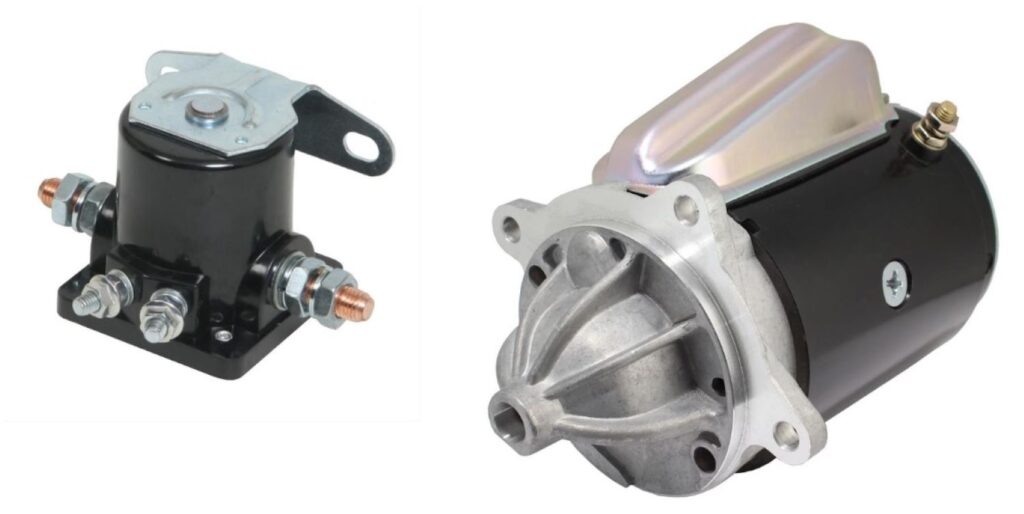
All starters have a contactor like the one described, but other manufacturers opted to make that heavy contactor part of the starter, i.e., the “solenoid.”
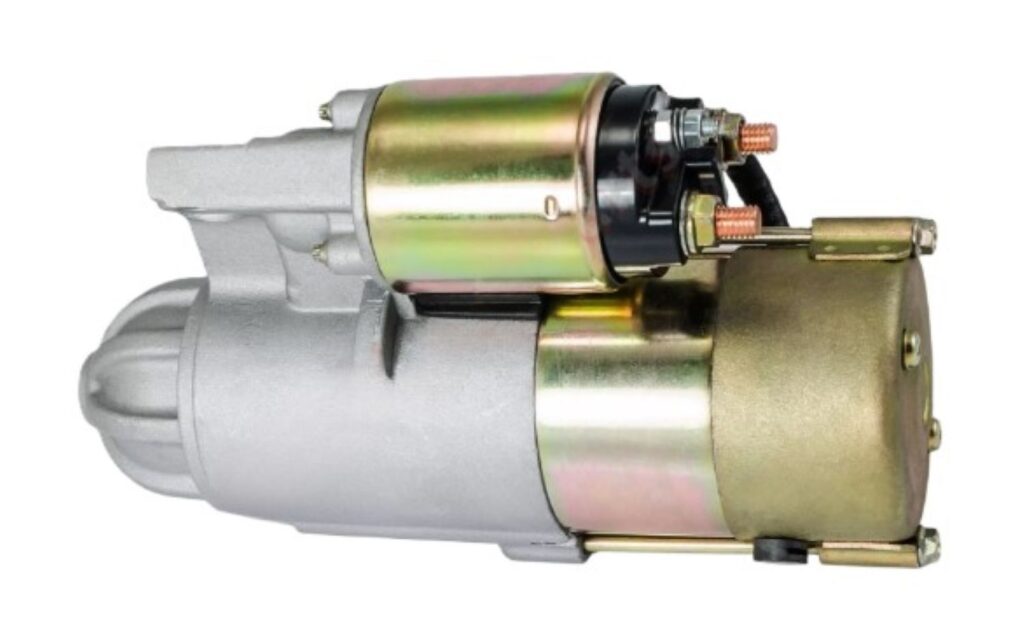
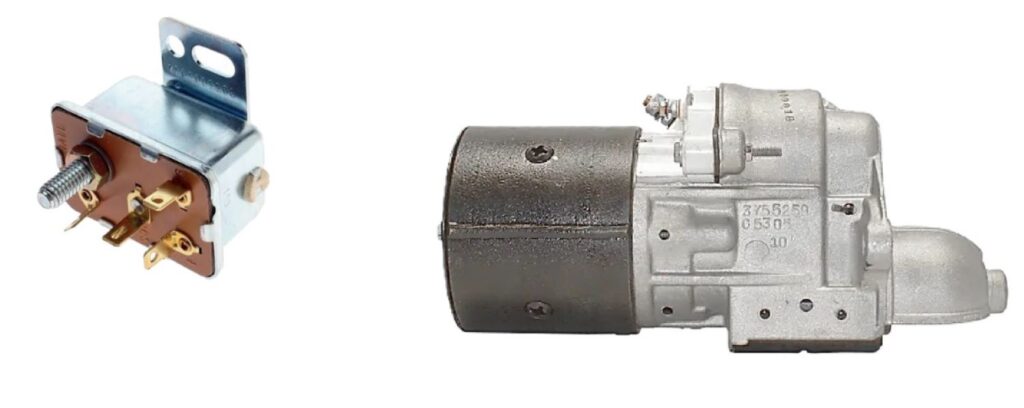
Starter relays are frequently regular ISO relays mounted in a relay box or fuse panel and they are either wired to receive a command from the ignition switch or the PCM to energize the starter or they are used to disable the starter if the neutral safety switch isn’t in park or neutral. You need to know how your vehicle is wired, so look it up.
In the car starter, the relay connects to the starter ring gear and the starter gear. The electric current can flow when the two gears align with each other.
Unfortunately, the starter relay can get damaged, causing the contacts to open and close continuously. If this happens, it can put the starter ring and starter gears out of alignment. Misaligned gears can interfere with the current flow, leading to issues like the starter still cranking after a successful start-up sequence or the engine failing to turn over.
Starting your car when it has a bad relay can damage the starter. If you think the starter relay has gone bad, replace it.
Starter relays are frequently regular ISO relays mounted in a relay box or fuse panel and they are either wired to receive a command from the ignition switch or the PCM to energize the starter or they are used to disable the starter if the neutral safety switch isn’t in park or neutral. You need to know how your vehicle is wired, so look it up.
– Richard McCuistian, ASE Certified Master Automobile Technician
Bad Starter Solenoid Switch
The solenoid switch turns on the starter motor at the beginning of the ignition process. Upon receiving the correct signal, the solenoid draws current from the battery and closes the switch. The electrical power spins the starter motor and cranks the engine.
A bad solenoid switch can make the starter motor issue clicking sounds.
Loose Wiring
Electrical wires carry electricity from the battery to the car starter. Without a steady supply of sufficient power, the starter motor won’t crank the engine properly.
A loose wire can cause fluctuations in the car starter’s electrical supply, leading to unreliable performance. In the worst-case scenario, the bad wire can cut off power to the starter, preventing it from cranking the engine.
Dirty or Corroded Starter Connectors
The car starter has connectors that serve as attachment points for the wires leading to the electrical wiring. Exposure to air or water can corrode the metal parts, forming rust. Dirt and dust can also accumulate on the connectors.
Corroded and dirty starter connectors increase the electrical resistance between circuits. They can impede the electric current’s passage through the connectors. If insufficient current flows through the connectors and into the car starter, the starter might have trouble cranking the engine.
Damaged or Worn-Out Starting System Parts
Other starting system parts include the starter-to-battery cable and the starter relay. These parts are responsible for transporting and distributing electrical power through the system, but they can also wear out and become less effective. If this happens it can reduce the car starter’s service life by forcing the starter to work harder or erratically.
Oil or Coolant Leaks
In older vehicles, the engine might leak oil from damaged or worn-out seals. If the oil reaches the car starter, it can damage the part. You will have to replace the ruined starter and fix the oil leak.
Knowing how long the car starter will last is useful if you want to minimize the time your vehicle spends in maintenance and repair.
Any information provided on this Website is for informational purposes only and is not intended to replace consultation with a professional mechanic. The accuracy and timeliness of the information may change from the time of publication.











